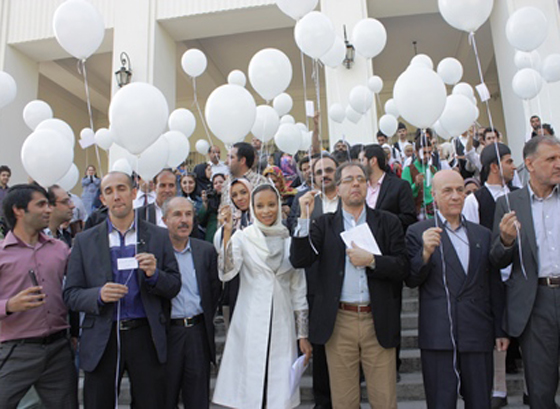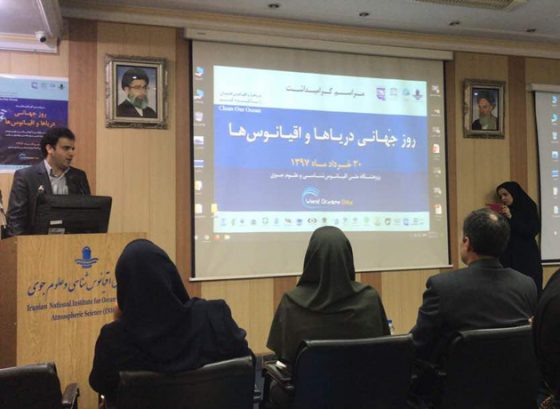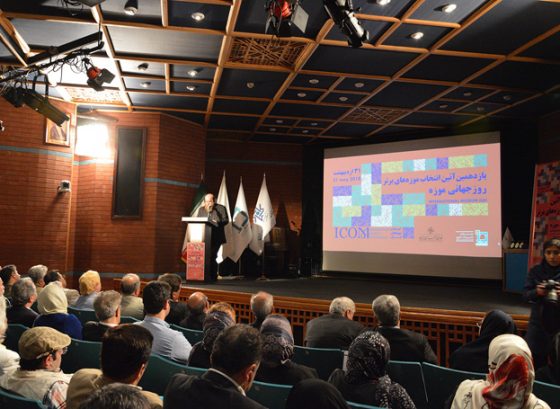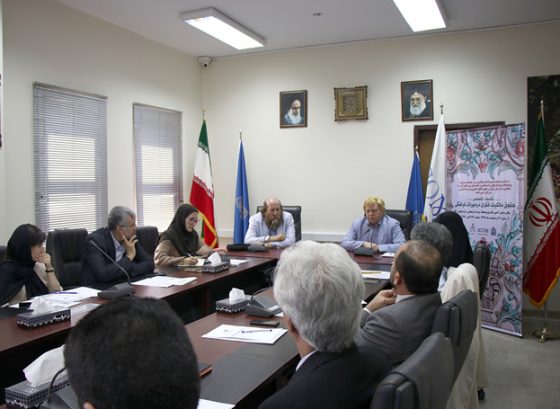“It is in the minds of men that the defences of peace must be constructed”: UNESCO

UNESCO Iran and the Iranian National Commission for UNESCO commemorated World Peace Day 2014 yesterday in a joint event held at the Cinema Hall of the Mellat Palace Museum in Sa’adabad Historical and Cultural Complex, Tehran,AVA Diplomatic Reports.Members of international organizations, foreign missions based in Tehran, scholars, academia, artists and civil society members participated in this ceremony.
Ms. Esther Kuisch Laroche, UNESCO Representative in Iran, remarked that World Peace Day 2014 is commemorated while both human lives and identities are under attack in Syria, Iraq and elsewhere, in violence that aims to strike at the cultural and religious values of peoples. She referred to the theme of the World Peace Day 2014, the Rights of Peoples to Peace and said, ‘This year’s theme belongs to all nations.’
Ms. Laroche further cited that more than half of the world population is under the age of 25, and that 90 percent live in developing countries and face what we call a ‘crisis of future’ – without skills, without jobs.’ She added, ‘The world is not safe when over one billion people live in extreme poverty. Societies are not secure when people lack access to education and health, when unsustainable practices threaten the environment, when people do not enjoy equal rights. She continued saying that, ‘peace based exclusively upon political and economic arrangements of governments, can never be a lasting peace.
We need to create solidarity among human kind, by fostering greater dialogue, understanding and trust between peoples.’ The UNESCO Representative in Iran underscored that education, sciences, culture and arts are important tools to bring us all closer together.
Ms. Laroche concluded that ‘since wars begin in the minds of men, it is in the minds of men that the defences of peace must be constructed.’
The co-host of the ceremony, Dr. Saeidabadi, Secretary General of the Iranian National Commission for UNESCO also emphasized the need for ‘different people including diplomats, artists, officials and NGOs collectively to commit themselves to the institutionalization of peace across the world’. He urged respect for diversity, avoiding religious and political discrimination among and within nations, and refraining from cultural mainstreaming under the pretext of preventing conflicts arising from cultural diversity.
Following his reading aloud of the statement of the UN Secretary General for World Peace Day 2014, the UN Resident Coordinator, Mr. Gary Lewis said: ‘If we wish to prevent future conflicts, we must promote the culture of peace.’ Referring to the UN’s declaration in 1984 that affirmed the Right of the Peoples to Peace, Mr. Lewis highlighted that every right carried with it an equivalent and corresponding obligation toward peace.
He added, ‘I think that if we balance rights with obligations, then we have a better chance of establishing the firm foundations for peace in future.’ The UN Resident Coordinator reviewed some of these responsibilities and said, ‘the first is an obligation to reduce poverty, which is a driver of conflict.’ He further stated that if the citizens are provided with health, skills, food and education, they will have the capacity to make a choice that will offer them new opportunities and bring greater human security. Reducing inequality was the other obligation to which Mr. Lewis referred.
He argued that taking care of the environment (by reducing water scarcity and desertification which drives unsafe migration) would help reduce conflict over scarce resources. Underlining the environmental challenges in the Middle East and in Iran, he mentioned water scarcity, desertification, increasing production of greenhouse gasses, and sand and dust storms blowing from the west of Iran as threats to human security. Mr. Lewis said that – across the planet – another obligation was to increase accountability, and give people a voice. Finally, he argued that actively promoting a “culture of peace” – including through peace education – would reduce the risk of future conflict. Professor Kayhan Barzegar was the next keynote speaker. He said, ‘Peace is a human legacy. But the important point is that the world is moving toward regionalization; therefore, peace is becoming regional as well.’ He continued, ‘It is upon us to educate people with the concepts of peace through cultural education at schools and universities and prevent war and conflicts in any country.’ He stressed that peace has its own regional characteristics, just in the same manner that each country and region has its own specificities.
A piece of solo classical music and Iranian traditional music from Gilan province were performed at this ceremony to highlight the respect for cultural diversity. The ceremony ended in a symbolic act of releasing white balloons with peace messages attached to them. On the sidelines of this ceremony an art exhibition, called “Season of Peace” was inaugurated in the Museum of Fine Arts, showcasing 350 artworks of 80 self-taught artists.




